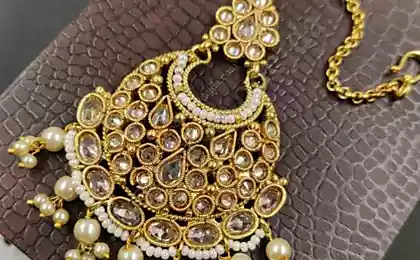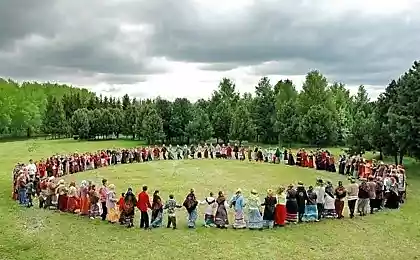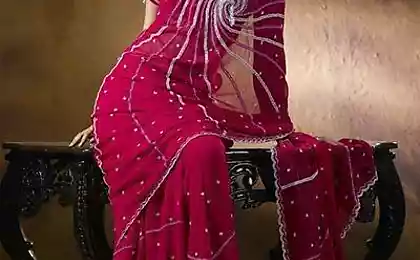489
Indian saree
Indian saris for centuries was considered the pride of Indian women and was an indispensable attribute of clothing from the Hindu goddesses. Its history is as old as Indian civilization. The word "Sari" comes from the Sanskrit word "sati", which means cloth. The first traces of sarees were found in the valley of the river Indus, and the first mention of it, extant in the Indian epic, dates from 100 BC.
Seventy six million one hundred twenty nine thousand seven hundred twenty one
However, since then, it took many thousands of years, but passing through the centuries successfully withstood the test of time, Indian sarees, of course, has undergone some changes. During this time she absorbed many of the customs and traditions of its people. Despite the fact that over time, the peoples of India had made their adjustments, the national dress of the Indian Sari has retained its originality and is now known all over the world.
Twenty seven million eight hundred seventy thousand six hundred two
Indian saree every woman look charming. Tender and sensual attribute of clothes is beneficial emphasizes the dignity of Indian women, demonstrating their grace and hiding flaws. In fact, Sari is not one, but three parts: a short blouse, a petticoat and a long piece of fabric (up to 12 meters), one end of which is wrapped around the hips, the other hangs over the shoulder. The ability to wear a Sari is an art, it is to wrap it around the body in a way that did not require any clips or fasteners. Many it takes a minute. Indian sarees for many thousands of years a faith and truth is Indian women. It is no secret that about 80% of the modern Indian women prefer modern clothing.
Seventy five million four hundred seventy seven thousand five hundred seven
For Indian men there is nothing cuter than Indian girls in saree. Modern Sari is a single piece of fabric without a single seam the length of which generally ranges from 5 to 9 meters, width one meter. Side along the fabric used as clothing, visible border, which, as a rule, is the lower edge of the saree with a pattern. The Indian Sari with their hands, the pattern can be woven, embroidered or printed colors, and decorated with semiprecious stones. Looking for Indian saree photo that can be found in various magazines, we see over his shoulder the edge of the fabric, which is called Pala or Pallas.
Thirty eight million seven hundred fifty one thousand one hundred forty eight
Usually he is walking nicely developing rear. The beauty of the traditional garment cannot be underestimated. That's why most Indian women prefer to wear such clothes every day. Despite the fact that it almost completely hides the body of Indian women, many men find Indian girls in saree graceful and seductive. Good quality Sari will never be worn out and will not shed, so the Indian sarees in the country often passed down from generation to generation.
Source: /users/117
Seventy six million one hundred twenty nine thousand seven hundred twenty one
However, since then, it took many thousands of years, but passing through the centuries successfully withstood the test of time, Indian sarees, of course, has undergone some changes. During this time she absorbed many of the customs and traditions of its people. Despite the fact that over time, the peoples of India had made their adjustments, the national dress of the Indian Sari has retained its originality and is now known all over the world.
Twenty seven million eight hundred seventy thousand six hundred two
Indian saree every woman look charming. Tender and sensual attribute of clothes is beneficial emphasizes the dignity of Indian women, demonstrating their grace and hiding flaws. In fact, Sari is not one, but three parts: a short blouse, a petticoat and a long piece of fabric (up to 12 meters), one end of which is wrapped around the hips, the other hangs over the shoulder. The ability to wear a Sari is an art, it is to wrap it around the body in a way that did not require any clips or fasteners. Many it takes a minute. Indian sarees for many thousands of years a faith and truth is Indian women. It is no secret that about 80% of the modern Indian women prefer modern clothing.
Seventy five million four hundred seventy seven thousand five hundred seven
For Indian men there is nothing cuter than Indian girls in saree. Modern Sari is a single piece of fabric without a single seam the length of which generally ranges from 5 to 9 meters, width one meter. Side along the fabric used as clothing, visible border, which, as a rule, is the lower edge of the saree with a pattern. The Indian Sari with their hands, the pattern can be woven, embroidered or printed colors, and decorated with semiprecious stones. Looking for Indian saree photo that can be found in various magazines, we see over his shoulder the edge of the fabric, which is called Pala or Pallas.
Thirty eight million seven hundred fifty one thousand one hundred forty eight
Usually he is walking nicely developing rear. The beauty of the traditional garment cannot be underestimated. That's why most Indian women prefer to wear such clothes every day. Despite the fact that it almost completely hides the body of Indian women, many men find Indian girls in saree graceful and seductive. Good quality Sari will never be worn out and will not shed, so the Indian sarees in the country often passed down from generation to generation.
Source: /users/117























